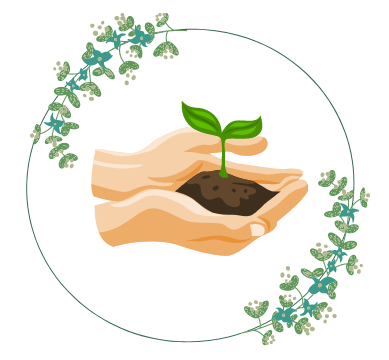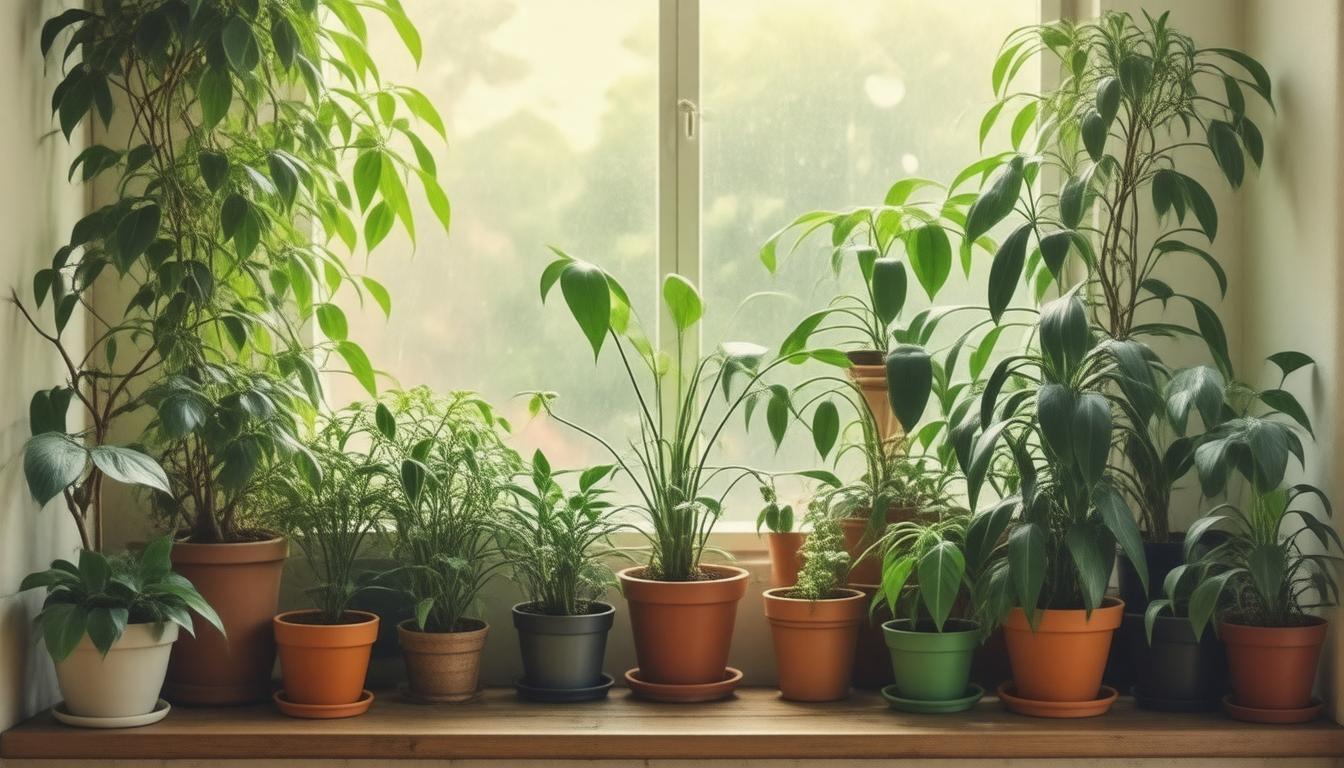Indoor plants can bring a touch of nature into our homes, provide fresh air, and even enhance our mental well-being. However, many plant enthusiasts often find themselves struggling with indoor plants. If you’re one of them, don’t fret! In this comprehensive guide, we’ll share some valuable tips that will save your greenery and help you cultivate a thriving indoor garden. Whether you’re a beginner or an experienced plant parent, understanding the basics of indoor plant care will set you on the right path to success.
Key Takeaways
- Understanding your plants’ specific needs is vital for their health.
- Common mistakes include overwatering and improper light exposure.
- Selecting plants suited for your environment simplifies care.
- Investing in essential tools enhances your plant care routine.
- Regularly monitoring humidity and light conditions can prevent issues.
Understanding the Basics of Indoor Plant Care
If you’re struggling with indoor plants, these tips will save your greenery and ensure your indoor jungle thrives. Caring for indoor plants might seem daunting, but understanding the basics can transform your experience. First, consider the light requirements of your plants; most houseplants prefer bright, indirect sunlight. Positioning your plants near a window where they can receive adequate light without burning can make a significant difference. Next, be mindful of watering; overwatering is a common mistake and can lead to root rot. Allow the top inch of soil to dry out before giving your plants a drink to ensure they stay healthy. Additionally, humidity plays a critical role in plant health, especially for tropical species that thrive in moist environments. You can increase humidity around your plants with pebble trays or a humidifier. Regularly checking for pests and providing the right nutrients through fertilization will also keep your plants looking lush. By following these simple guidelines, you’ll be well on your way to a flourishing indoor garden.
Common Mistakes to Avoid with Indoor Plants
If you find yourself struggling with indoor plants, you’re not alone. Many plant enthusiasts face challenges that can hinder the health and vitality of their green companions. One common mistake is over-watering; it’s crucial to allow the soil to dry out between waterings to prevent root rot. Additionally, placing your plants in the wrong light can impede their growth—be sure to research each plant’s light requirements. Another frequent pitfall is neglecting pest control; check your plants regularly for signs of infestation and address issues promptly. Lastly, using the wrong type of soil can severely affect drainage and nutrient availability. By avoiding these common mistakes, you can create an environment where your indoor plants thrive, ensuring that your home stays vibrant and refreshing.
‘The creation of a thousand forests is in one acorn.’ – Ralph Waldo Emerson
Choosing the Right Plants for Your Space
Selecting the right plants for your indoor space can seem daunting, especially if you’re struggling with indoor plants that just won’t thrive. However, these tips will save your greenery and provide a vibrant environment in your home. First, assess the natural light available in your space; different plants have varying light requirements, and understanding this can significantly impact their growth. For instance, if your room receives low light, consider choosing hardy plants like pothos or snake plants, which are known for their ability to adapt. Additionally, factor in your climate and humidity levels, as some plants thrive in dry conditions while others prefer a more humid environment. Regularly rotating your plants and inspecting them for signs of distress can also help in maintaining their health. By following these guidelines, you can make informed decisions and create an inviting oasis in your home with flourishing indoor plants.
Essential Tools and Supplies for Plant Care
Struggling with indoor plants? These tips will save your greenery with the right essential tools and supplies! Whether you’re a seasoned plant parent or a novice just starting out, having the proper resources can make a significant difference in maintaining the health of your indoor botanical companions. First and foremost, a high-quality soil mix designed for indoor plants is crucial, as it enables proper drainage and nutrient retention. Invest in a moisture meter to help monitor your plants’ hydration needs, preventing overwatering or underwatering — two common challenges for those struggling with indoor plants. Additionally, a pair of pruning shears can assist in tending to any dead or brown leaves, encouraging new growth and keeping your plants looking their best. Don’t overlook plants’ love for adequate light; grow lights are a reliable investment to ensure they receive enough brightness, especially during the darker months. Lastly, consider a humidifier, particularly for tropical plants, as maintaining adequate humidity levels is essential for their well-being. By equipping yourself with these essential tools and supplies, you’ll find that the journey of caring for indoor plants becomes much more manageable and enjoyable.
Tips for Maintaining Humidity and Light
If you are struggling with indoor plants, these tips will save your greenery by ensuring the right levels of humidity and light. One of the most crucial aspects of indoor gardening is to understand the specific light requirements of each plant. For example, while some plants thrive in direct sunlight, others may prefer indirect light. It’s important to place your plants accordingly, perhaps near windows with filtered sunlight or in spots where they receive morning rays but are shielded from the harsh afternoon sun. Additionally, maintaining humidity is vital, as many houseplants hail from tropical climates. To boost humidity levels, consider grouping your plants together or using a humidifier. Another effective method is to place a tray filled with water and pebbles beneath your plants, allowing for evaporation that will naturally increase moisture in the air. By implementing these strategies, you can significantly improve your indoor plants’ health and vibrancy, ensuring a thriving environment in your home.
Troubleshooting Common Plant Issues
Struggling with indoor plants? These tips will save your greenery as you navigate some common challenges that every indoor gardener faces. Whether it’s yellowing leaves, wilting stems, or pest infestations, many plant lovers find themselves in a bind when their once-thriving foliage begins to decline. First, assess the location of your plants; inadequate light can stunt growth and lead to unhealthy leaves. Consider moving your green companions closer to a window that offers bright, indirect sunlight. If you notice your leaves getting crispy at the edges, it could be a sign of underwatering, while mushy stems might indicate overwatering. Adjusting your watering schedule and ensuring proper drainage can make a world of difference. Additionally, watch out for pests, such as spider mites or aphids, that often invade indoor plants. A gentle rinse with water or an insecticidal soap can help eliminate these unwanted guests. By taking proactive steps and remaining attentive to their needs, you can ensure your indoor plants flourish, turning your living space into a vibrant oasis.
Frequently Asked Questions
What are some common mistakes to avoid when caring for indoor plants?
Common mistakes include overwatering, placing plants in areas with inadequate lighting, and neglecting to check for pests or diseases. It’s important to research each plant’s specific needs to avoid these pitfalls.
How do I choose the right indoor plants for my living space?
Consider factors like the amount of natural light in your space, the humidity levels, and how much time you can dedicate to plant care. Opt for low-maintenance plants if you’re a beginner or if your environment is less than ideal.
What tools and supplies do I need for indoor plant care?
Essential tools include pots with drainage holes, potting soil, watering cans, pruning shears, and humidity trays. Optional tools may also include plant food and moisture meters.
How can I maintain adequate humidity and light for my indoor plants?
You can maintain humidity by misting your plants, using a humidifier, or placing plants on trays filled with water and pebbles. For light, ensure that your plants are positioned according to their light needs, whether that be indirect sunlight or in bright, well-lit areas.
What should I do if my indoor plants are showing signs of stress?
Check for signs of overwatering or underwatering, pests, or poor lighting conditions. Adjust your care routine accordingly, and consider repotting if the plant is root-bound or if the soil is depleted of nutrients.




